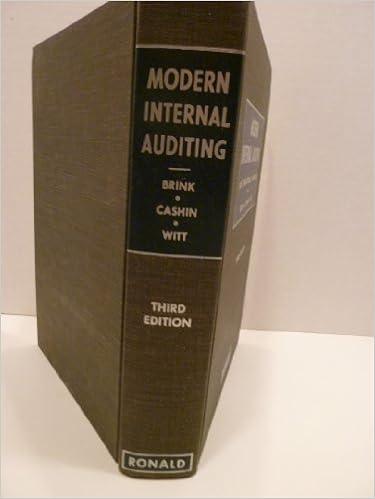Question
KC Corporation manufactures an air-freshening device called GoodAir, which it sells to six merchandising firms. The list price of a GoodAir is $ 30, and
KC Corporation manufactures an air-freshening device called GoodAir, which it sells to six merchandising firms. The list price of a GoodAir is $ 30, and the full manufacturing costs are $ 18. Salespeople receive a commission on sales, but the commission is based on number of orders taken, not on sales revenue generated or number of units sold. Salespeople receive a commission of $ 10 per order (in addition to regular salary). KC Corporation makes products based on anticipated demand. KC carries an inventory of GoodAir, so rush orders do not result in any extra manufacturing costs over and above the $ 18 per unit. KC ships finished product to the customer at no additional charge for either regular or expedited delivery. KC incurs significantly higher costs for expedited deliveries than for regular deliveries. Customers occasionally return shipments to KC, and the company subtracts these returns from gross revenue. The customers are not charged a restocking fee for returns.
Budgeted (expected) customer-level cost driver rates are:
Order taking (excluding sales commission).. $ 15 per order
Product handling .. $ 1 per unit
Delivery $ 1.20 per mile driven
Expedited (rush) delivery . $ 175 per shipment
Restocking $ 50 per returned shipment
Visits to customers $ 125 per customer
Because salespeople are paid $ 10 per order, they often break up large orders into multiple smaller orders. This practice reduces the actual order-taking cost by $ 7 per smaller order (from $ 15 per order to $ 8 per order) because the smaller orders are all written at the same time. This lower cost rate is not included in budgeted rates because salespeople create smaller orders without telling management or the accounting department. All other actual costs are the same as budgeted costs.
Information about KCs clients follows:

.:.
* Because DC places 20 separate orders, its order costs are $ 15 per order. All other orders are multiple smaller orders and so have actual order costs of $ 8 each.
Required
1. Classify each of the customer-level operating costs as a customer output unit level, customer batch-level, or customer-sustaining cost.
2. Using the preceding information, calculate the expected customer-level operating income for the six customers of KC Corporation. Use the number of written orders at $ 15 each to calculate expected order costs.
Step by Step Solution
There are 3 Steps involved in it
Step: 1

Get Instant Access to Expert-Tailored Solutions
See step-by-step solutions with expert insights and AI powered tools for academic success
Step: 2

Step: 3

Ace Your Homework with AI
Get the answers you need in no time with our AI-driven, step-by-step assistance
Get Started


